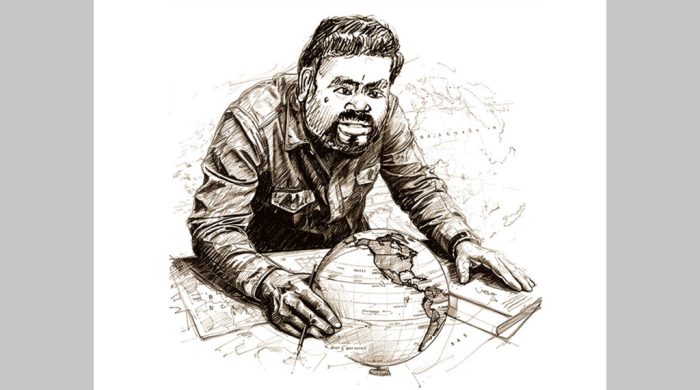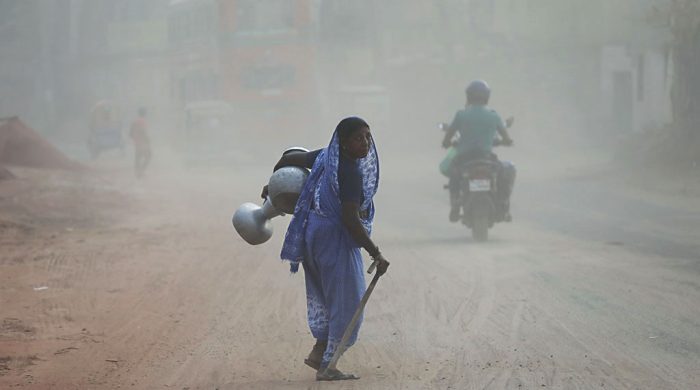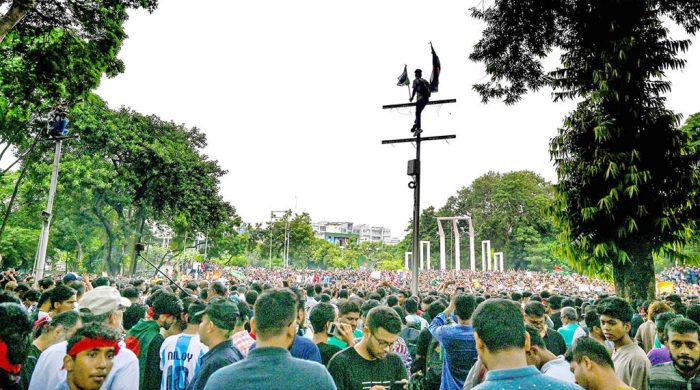Mental health crisis of Kashmiri women

- Update Time : Monday, February 7, 2022
- 116 Time View

Three decades of conflict in the Himalayan valley have resulted in a drastic surge in mental health issues, especially among women, writes Shefali Rafiq
SHAMSHADA was engrossed in conversation after lunch at her cousins’ house in 2016, when, all of a sudden, she thought the room was filling with smoke.
The 40-year-old stood up and screamed: ‘There’s a fire in this room!’ As her relatives tried to pacify her, she ran outside, barefoot. It was a panic attack.
Panic attacks have been part of her life ever since. This first instance was both ‘painful’ and ‘embarrassing’. ‘I don’t know what happened to me. But I could see fire and I could feel it in my body,’ Shamshada said.
When she returned to her home in south Kashmir’s Pulwama district, she still felt a burning sensation inside. Immersing her feet and hands in cold water gave her temporary respite, but the external shivering lasted the whole night.
Not knowing what was wrong, the family took her to different doctors including a cardiologist, who prescribed medication. But the symptoms refused to go away. ‘My family thought I was being dramatic. Only I knew what I was going through,’ Shamshada explained.
She was also taken to a faith healer, in case she had been a victim of black magic. Faith healers are the first choice for many in Kashmir, where, as in other parts of the world, stigma and ignorance surround mental health.
According to Zoya Mir, a clinical psychologist in Srinagar, the capital of Kashmir, physical illness takes priority for many people. Mental illness is not visible in the same way, so it is difficult to understand it.
‘Stigma is attached to mental illness. Someone visiting a psychiatrist is considered crazy, which is why not many people even speak about it,’ Mir said.
The Jammu and Kashmir region has been a bone of contention between nuclear neighbours India and Pakistan, both of which have laid claim to it since the partition in 1947. In the Indian-administered Kashmir Valley, militant separatists have been fighting government forces on and off since 1989. Thousands of civilians, and fighters from both sides, have been killed in the unrest.
According to a 2015 mental health survey by Médecins Sans Frontières, 45 per cent of the Kashmir Valley’s population — nearly 1.8 million adults — experience some form of mental distress. The report found that 50 per cent of women, compared to 37 per cent of men, suffered from probable depression; 36 per cent of women and 21 per cent of men had a probable anxiety disorder; and 22 per cent of women and 18 per cent of men suffered from probable post-traumatic stress disorder.
Anxiety, sleepless nights and ‘unknown fear’
FIVE years ago, Shamshada was at home when armed men barged in. They asked for her husband, who they believed had been an informer for the Indian paramilitary. ‘He has gone to offer prayers,’ she said.
Worried about her husband’s safety, Shamshada followed them. To her utter shock, she heard gunshots and thought he’d been killed. Although injured, her husband survived, but the episode had a lasting impact.
What followed was anxiety, sleepless nights and an ‘unknown fear’. Shamshada suffered for years; it was only recently that she was diagnosed with post-traumatic stress disorder. Her relatives tell her she is fine, but ‘how can I control my thoughts? I think my thoughts will kill me one day,’ she told me last month.
The current situation in Kashmir, where killings and search operations by government forces are a daily occurrence, has only added to her misery: ‘I don’t have peace, I fear for the safety of my family. Now I worry about my growing son.’
‘Living in a hell’
NASEEMA Akhter was just 20 in 2002 when her husband, Syed Anwar Shah, left for work and never returned. Shah was one of thousands of young men forcibly taken away by Indian forces or, in some cases, unknown gunmen. Government officials allege these men crossed over to Pakistan to train with separatist militants, but the families deny this.
Naseema was left with an 18-month-old daughter, Shazia, and the burden of family responsibilities and financial worries. Today, after her daughter got married last year, she lives alone in a two-room house in Grandwan, a village in Aishmuqam, south Kashmir. The loss of her husband has left a deep scar on her psyche.
‘My mind tells me that my husband is not alive, but my heart is not ready to accept it,’ Naseema said, while visiting the local shrine. Shrines in Kashmir are often seen as healing places, especially for women.
For several years after her husband’s disappearance, Naseema would wake up in the middle of the night. ‘I would see him in my dream and then, when I woke up, I would realise I am living in a hell,’ she said, fighting back tears. ‘I still get headaches for days at a time, and the nightmares won’t leave me alone.’
Instead of getting medical help, she seeks refuge at the nearby shrine. ‘I cannot afford to go to a doctor every week. But I have to pray for my health, for the sake of my daughter,’ she said.
Naseema said her life would not have been as difficult if she had found her husband’s body. ‘This hollowness inside me can only be understood by someone whose loved one has disappeared,’ she added.
Dr Majid, senior psychiatrist at the government hospital in Pulwama, who treats many such patients, said their depression is of the worst kind: ‘It is very important to have closure. These patients do not have that and it makes it even worse.’
The mental health crisis in Kashmir is increasing, following a lockdown partly to do with the Covid pandemic that has lasted nearly two years. Majid, who is the only psychiatrist serving two districts, Pulwama and Shopian, said that almost 60 per cent of his patients are women.
‘I have seen mothers whose sons were killed, sisters whose brothers were injured, women who have lost their houses in the conflict. It doesn’t impact one’s mental health in a day, it is a gradual process and impacts the mind over time and makes it worse,’ he said.
‘I should have died’
IN SUMMER 2016, a popular militant commander, Burhan Wani, was killed by Indian paramilitary forces. His death was followed by days of protests and curfews across the entire Kashmir Valley. More than 100 youths were killed; many people, including women, were injured.
Among them was 14-year-old Insha, who was revising for exams. Metal pellets, used by government forces since 2010, hit her face as she peeked through her window in Sedow village. What followed would change her life forever. The pellets had penetrated Insha’s eyes and she lost her eyesight completely.
‘I felt something on my face — that’s it. I don’t know what happened after that,’ Insha said, while warming her hands on a winter’s afternoon at her home in Srinagar. For several years, she had nightmares and trouble sleeping. ‘I would see a peacock pecking out the eyes of a girl, although I was never able to see the girl’s face. It terrified me.’
Since the incident, Insha has become more anxious. ‘Sometimes I feel so agitated that I wish I had died there, rather than having to live this life,’ she said. To avoid overthinking and to release stress, she goes for walks and spends time praying. ‘It helps me and I don’t think about other things,’ she explained.
Like Shamshada, Insha was also taken to a faith healer, to help her concentrate on her studies and for her persistent nightmares. He gave her an amulet. ‘I wear it all the time and I think it has helped me in getting rid of scary thoughts,’ she said.
Shamshada finally got help from mental health professionals, but Insha believes that the faith healer’s amulet has helped her and will help her in the future.
A study by the psychiatry department at the Government Medical College in Srinagar revealed that out of 380 pellet victims treated, 85 per cent were diagnosed with a psychiatric disorder. The figure was even higher — almost 93 per cent — for patients who had suffered eye injuries, compared with 70 per cent for patients with other injuries. Depression was the most common disorder — almost 26 per cent — while more than nine per cent of victims had post-traumatic stress disorder.
OpenDemocracy.net, February 3. Shefali Rafiq is an independent journalist based in Kashmir. Her work focuses on human rights, gender and society.



















